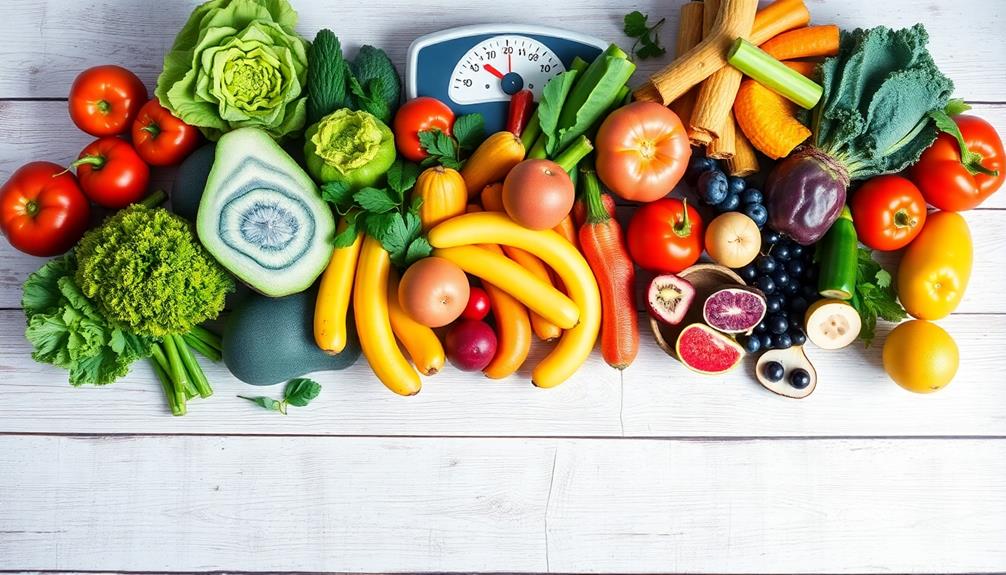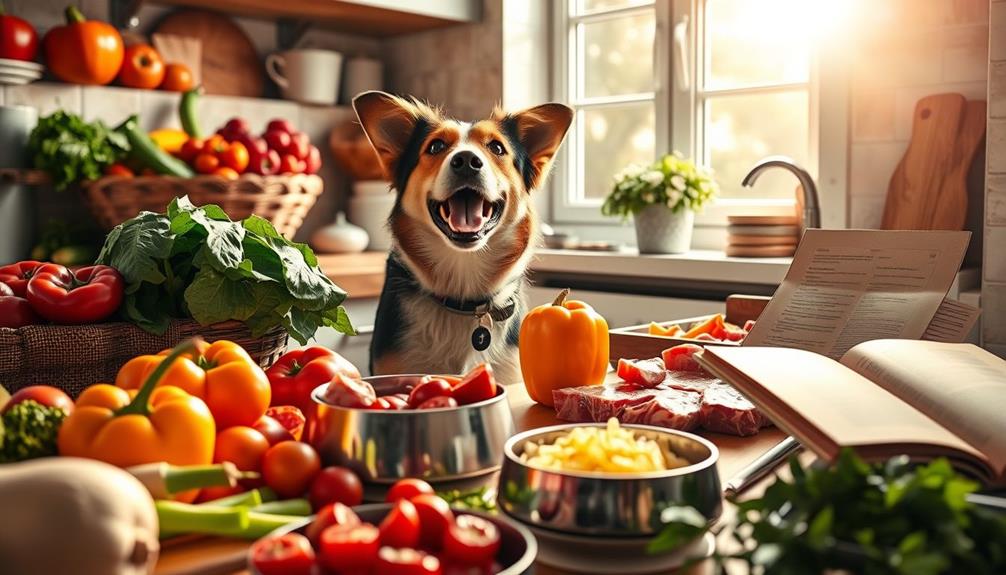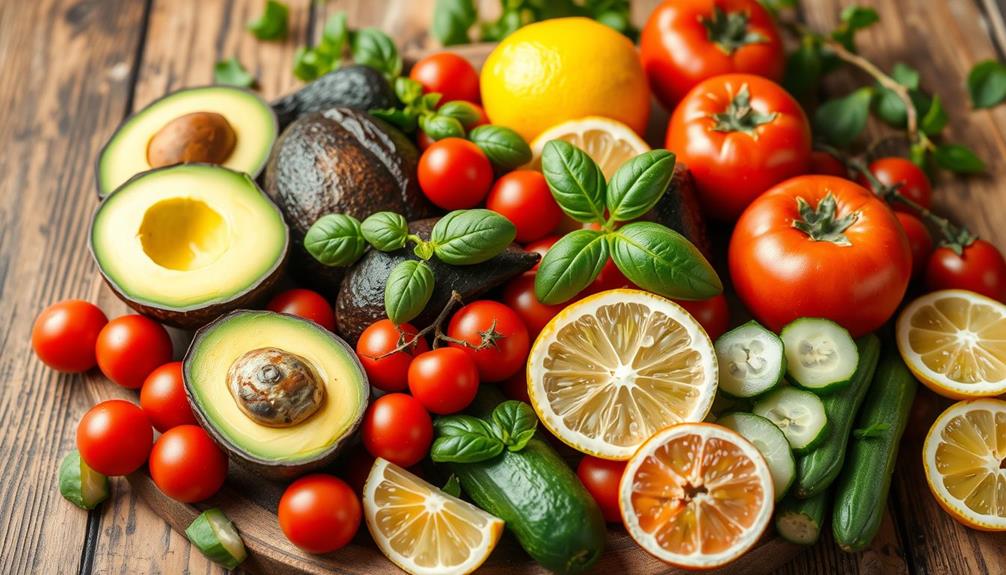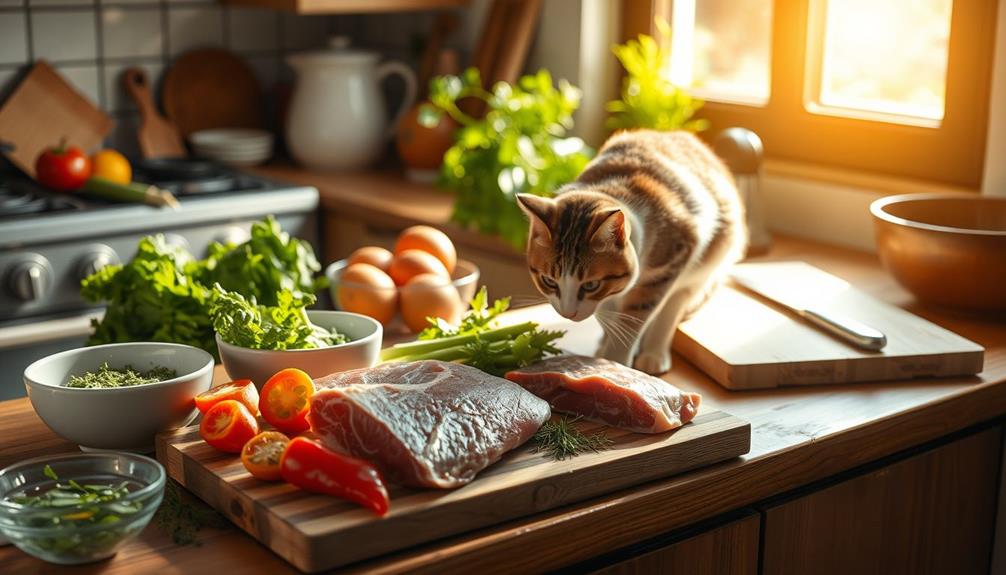Changing your dog to raw food takes patience and care. Start with a gradual shift over 10 days, mixing their kibble with raw food to help them adjust. Dogs may initially resist, so add flavor enhancements like cheese or canned sardines to entice them. Always make sure fresh water is available and monitor for any digestive issues. Keep an eye on their energy levels and stool consistency to gauge their adaptation. Focus on high-quality raw ingredients for a balanced diet. There's much more to explore about maintaining your dog's health during this change, making a successful switch to raw.
Key Takeaways
- Gradually transition from kibble to raw food over 10 days, starting with small raw portions mixed with kibble.
- Monitor your dog for detox symptoms like vomiting or loose stools and adjust the diet as needed.
- Enhance raw meals with flavor boosters like cheese or canned sardines to entice your dog initially.
- Observe stool consistency and adjust bone content if stools are soft to ensure proper digestion.
- Consult your veterinarian for tailored advice and to ensure your dog's raw diet meets nutritional needs.
Understanding Your Dog's Resistance
Changing your dog to raw food can be a challenging process, especially if they're used to kibble. Their initial rejection of raw dog food is common, as they often resist what's unfamiliar. Kibble's enticing aroma, sometimes enhanced with spray-on flavors, makes it hard for them to recognize raw food as a viable option.
Shifting your dog requires patience and a gradual introduction to allow their digestive system to adjust. It's essential to guarantee that the raw diet is balanced and nutritious, as improper feeding can lead to health issues. Additionally, maintaining a routine health check for signs of any adverse reactions is important, similar to routine health checks for pets.
To ease this change, consider a gradual adjustment over about ten days, slowly increasing the raw food percentage while decreasing kibble. During this time, monitoring food preferences can be invaluable.
Observe how your dog reacts to different types of raw food and make adjustments accordingly. You might need to entice fussy eaters by adding extras like cheese, eggs, or low-sodium bone broth to the raw meals, making them more appealing.
Steps for a Smooth Transition
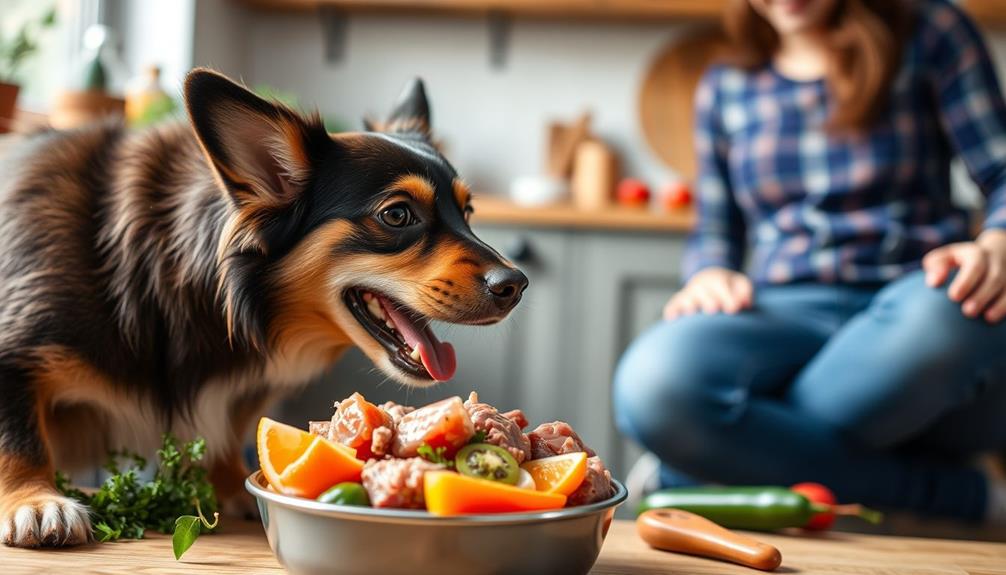
To help your dog embrace raw food, start by implementing a structured approach that eases them into the new diet. Begin with a gradual shift from their current kibble to raw food over ten days. This method allows their digestive system to adjust smoothly, reducing potential digestive issues.
| Day | Kibble Percentage | Raw Food Percentage |
|---|---|---|
| 1-3 | 75% | 25% |
| 4-6 | 50% | 50% |
| 7-9 | 25% | 75% |
| 10 | 0% | 100% |
As you make this shift, monitor your dog for any detox symptoms like vomiting or loose stools. If you notice any issues, consider adding plain canned pumpkin to firm up their stools. Always make sure fresh water is available, as hydration remains essential, even if they drink less due to the moisture content of raw food.
Don't hesitate to consult your veterinarian during this process for tailored advice and to address any concerns regarding your dog's health and diet changes. This support can help make the transition to raw food smoother.
Enhancing Raw Meal Appeal
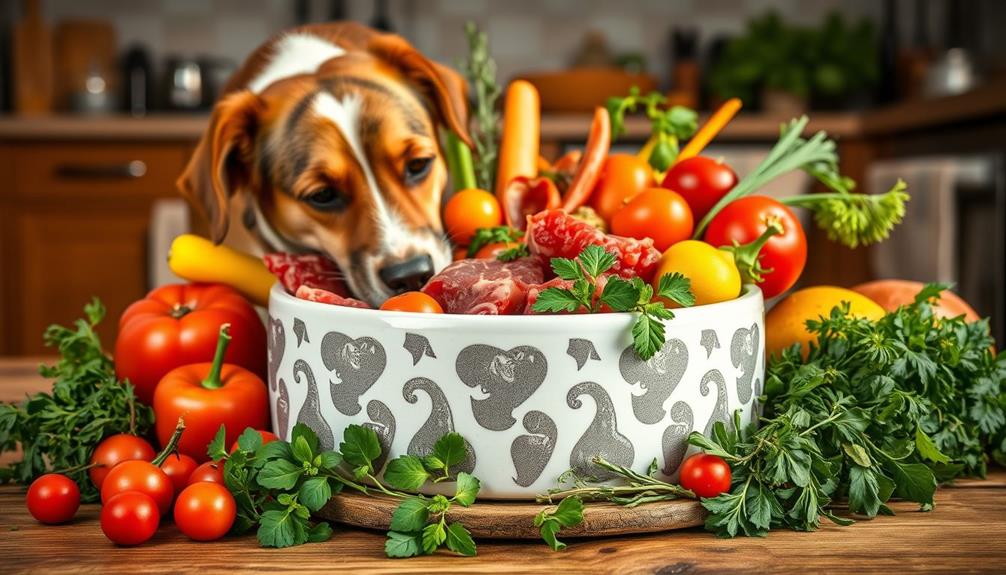
To make raw meals more enticing for your dog, try adding flavor enhancements like cheese or canned sardines.
Consider incorporating a few drops of essential oils for pet well-being that are safe for dogs, as they can enhance the overall appeal of the meal.
You can also lightly sear the meat before serving to release aromas that attract their attention.
These simple techniques can help ease the shift and guarantee your dog enjoys their new diet.
Flavor Enhancements
Often, enhancing the appeal of raw meals can make a significant difference in your dog's acceptance of the diet. By incorporating a few flavor enhancements, you can entice dogs to enjoy their new food and help them adapt to raw meals more easily.
Here are some ideas for flavor enhancements:
| Ingredient | Benefits |
|---|---|
| Low-Sodium Bone Broth | Increases palatability and adds nutrients |
| Goat's Milk | Provides additional nutrients while improving taste |
| Canned Pumpkin | Adds flavor and helps firm up stools |
You might also consider lightly searing the meat to release enticing aromas that draw your dog in during the initial adjustment phase. Starting with flavorful ingredients like cheese, eggs, or canned sardines can also make raw meals more appealing.
As your dog becomes accustomed to the new diet, gradually reducing these flavor enhancements will help them appreciate the natural taste of their food over time. With patience and creativity, you can make the adjustment to raw meals a positive experience for both you and your furry friend!
Searing Techniques
Searing your dog's raw food can be a game changer when it comes to enticing them to try new meals. This method is especially useful for picky eaters, as lightly searing raw meat releases enticing aromas that can attract your dog.
Additionally, confirming that you select the right food for your dog's needs is essential for their overall health and well-being, as discussed in cold medications overview. Start by searing small amounts of meat at a low temperature to enhance flavor while preserving its nutritional value.
Here are some tips to take into account:
- Use a small skillet to sear just a portion of the raw meat.
- Monitor your dog's reaction before gradually reducing the searing time.
- Verify that searing doesn't alter the balance of nutrients in their meal.
- Focus on maintaining a complete and balanced diet while feeding your dog.
- Be cautious of any signs of digestive upset after introducing seared meat.
Monitoring Health During Transition
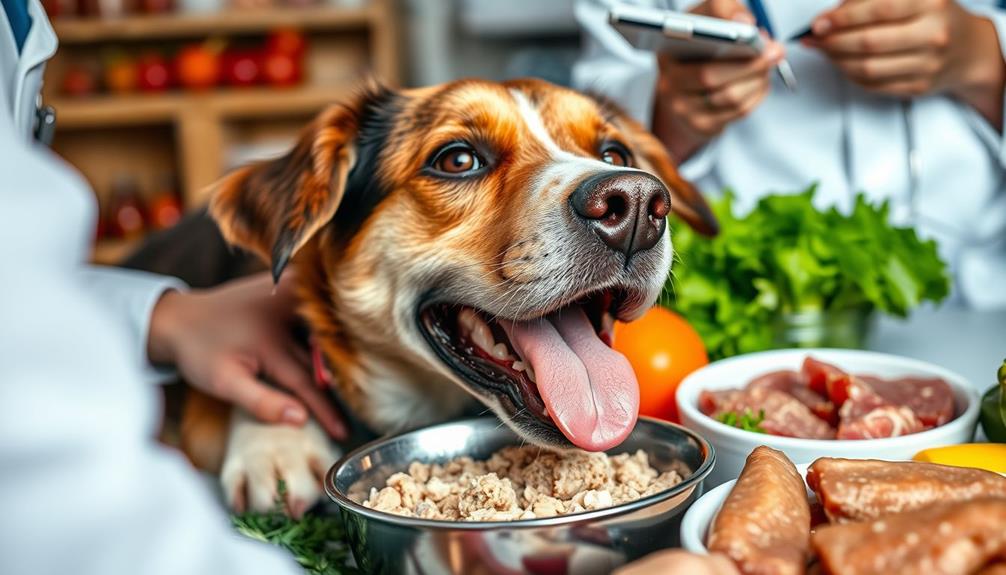
Shifting your dog to a raw food diet requires careful attention to their health to catch any potential issues early. Monitoring health during the change is essential, as your dog may experience detox symptoms like vomiting or loose stools. These can last from days to months, so keeping a close eye on stool consistency is important. Firm stools generally indicate good digestion, while soft stools may suggest a need for more bone content.
Be vigilant about hydration, too. Raw-fed dogs often drink less due to the moisture in their food, but it's critical to guarantee they have fresh, clean water available. Changes in energy levels and overall behavior can also reveal how well your dog is adapting. Improved liveliness is common, so watch for positive shifts.
If your dog experiences prolonged diarrhea, it's important to consult with a veterinarian to rule out any underlying health issues and avoid unnecessary returns to kibble diets.
| Health Indicator | What to Look For |
|---|---|
| Stool Consistency | Firm (good) / Soft (needs more bone) |
| Hydration | Fresh water always available |
| Energy Levels | Increased liveliness |
| Overall Behavior | Positive changes |
Benefits of a Raw Diet
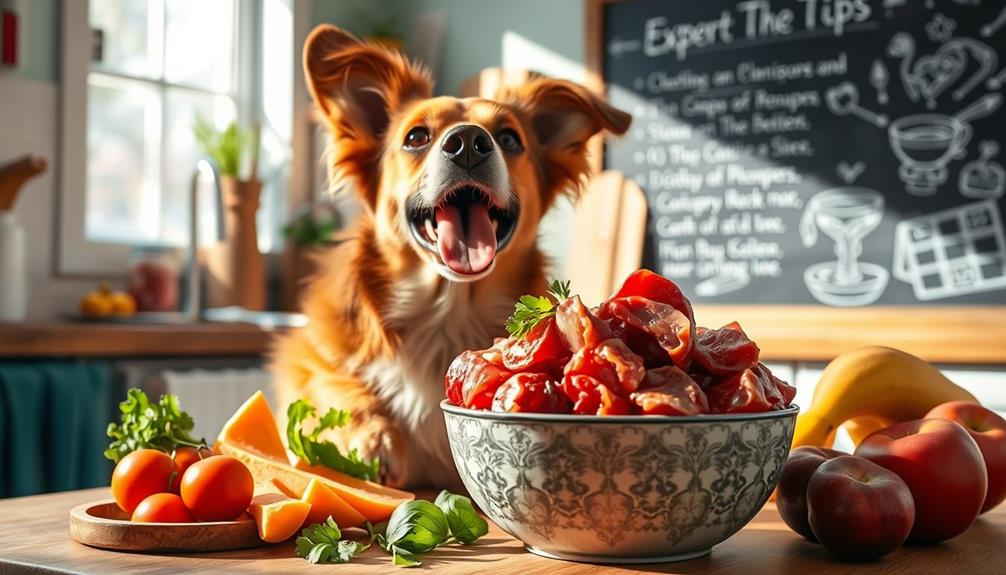
Shifting your dog to a raw food diet can access a range of health benefits that enhance their overall well-being. Many pet owners notice significant improvements in their dog's quality of life after making this change.
Additionally, incorporating healthy dog snacks can further support the positive effects of a raw diet. Here are some of the key benefits of a raw dog diet:
- Improved Digestion: Raw diets often lead to better nutrient absorption and healthier weight management.
- Skin and Coat Health: The higher levels of Omega-3 and Omega-6 fatty acids in raw food can create a shinier, healthier coat.
- Reduce Allergies: By eliminating processed ingredients, a raw food diet can help reduce allergies and food sensitivities.
- Dental Health: Natural chewing of raw bones promotes improved dental health, reducing plaque buildup and keeping teeth cleaner.
- Energy Levels: Dogs on a raw diet often enjoy increased energy and vigor, contributing to a more active lifestyle.
Choosing Quality Raw Food Options
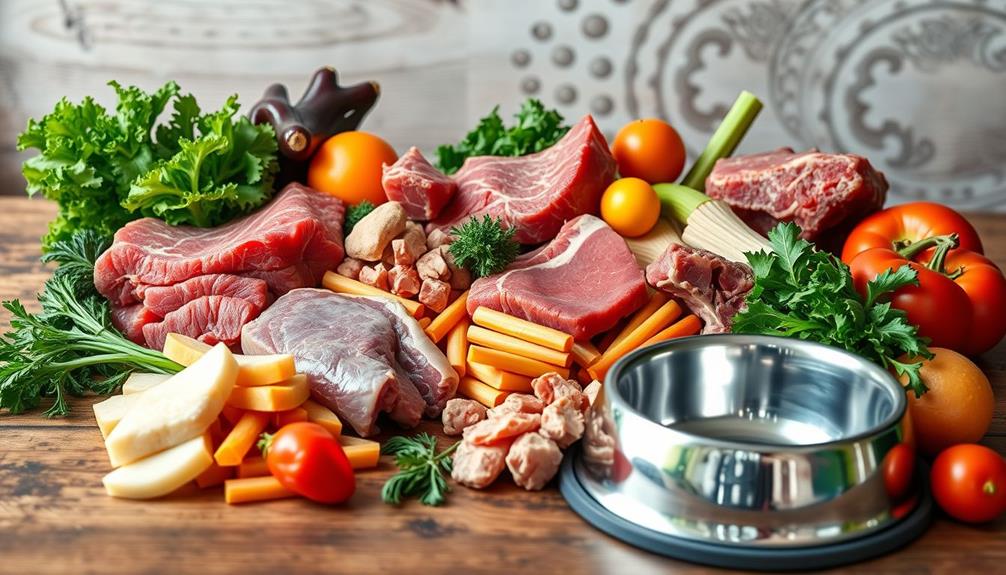
When it comes to choosing quality raw food options for your dog, prioritizing high-quality ingredients is vital. Look for raw food that's complete and balanced, ideally formulated to meet the nutritional standards set by the Association of American Feed Control Officials (AAFCO). This guarantees your dog receives all the nutrients they need without harmful additives.
Additionally, incorporating a variety of protein sources, such as beef, chicken, and fish, can enhance the nutritional profile and prevent food intolerances or allergies, much like how daily consumption of cranberry juice can provide health benefits through antioxidants.
It's also important to evaluate the packaging and storage practices of raw food brands. Proper handling minimizes the risk of bacterial contamination and keeps the food fresh.
Before making a purchase, research reviews and testimonials from other dog owners. This feedback can give you insight into the effectiveness and palatability of specific raw food brands, making your shift to raw smoother.
Frequently Asked Questions
How Long Does It Take for a Dog to Adjust to Raw Food?
It usually takes your dog about 7-10 days to adjust to raw food. However, if your dog's sensitive or older, you might need to extend that period to 4-6 months for a smoother change.
How Do You Switch Your Dog to a Raw Food Diet?
To switch your dog to a raw food diet, start gradually over 10 days. Mix kibble with raw food, monitor their response, and adjust based on their health and preferences to guarantee a smooth changeover.
How Should I Introduce Raw Food to My Dog?
To introduce raw food to your dog, start by mixing a small amount with their current food. Gradually increase the raw portion, and use treats or broth to entice them, making the change smoother.
Do Dogs Detox When Switching to Raw?
Yes, dogs can detox when changing to raw food. You might notice symptoms like vomiting or diarrhea as their bodies adjust. Monitor your dog's health closely during this time to guarantee a smooth adjustment.
Conclusion
Shifting your dog to a raw diet can feel like teaching a child to ride a bike—challenging at first but rewarding once they find their balance. By understanding your dog's resistance and following the steps for a smooth shift, you'll foster a healthier relationship with food. Just remember to monitor their health closely and choose quality options to guarantee a successful change. With patience and care, you'll both enjoy the journey to a happier, healthier life.


